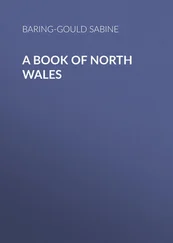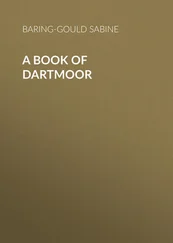Sabine Baring-Gould - A Book of The Riviera
Здесь есть возможность читать онлайн «Sabine Baring-Gould - A Book of The Riviera» — ознакомительный отрывок электронной книги совершенно бесплатно, а после прочтения отрывка купить полную версию. В некоторых случаях можно слушать аудио, скачать через торрент в формате fb2 и присутствует краткое содержание. Жанр: foreign_antique, foreign_prose, на английском языке. Описание произведения, (предисловие) а так же отзывы посетителей доступны на портале библиотеки ЛибКат.
- Название:A Book of The Riviera
- Автор:
- Жанр:
- Год:неизвестен
- ISBN:нет данных
- Рейтинг книги:5 / 5. Голосов: 1
-
Избранное:Добавить в избранное
- Отзывы:
-
Ваша оценка:
- 100
- 1
- 2
- 3
- 4
- 5
A Book of The Riviera: краткое содержание, описание и аннотация
Предлагаем к чтению аннотацию, описание, краткое содержание или предисловие (зависит от того, что написал сам автор книги «A Book of The Riviera»). Если вы не нашли необходимую информацию о книге — напишите в комментариях, мы постараемся отыскать её.
A Book of The Riviera — читать онлайн ознакомительный отрывок
Ниже представлен текст книги, разбитый по страницам. Система сохранения места последней прочитанной страницы, позволяет с удобством читать онлайн бесплатно книгу «A Book of The Riviera», без необходимости каждый раз заново искать на чём Вы остановились. Поставьте закладку, и сможете в любой момент перейти на страницу, на которой закончили чтение.
Интервал:
Закладка:
In winter and early spring it is that the coast is enjoyable. In winter there is the evergreen of the palms, the olive, the ilex, the cork tree, the carob, the orange and lemon and myrtle. Indeed, in the Montagnes des Maures and in the Estérel, it is always spring.
The resident in winter can hardly understand the structure of the towns, with streets at widest nine feet, and the houses running up to five and six storeys; but this is due to necessity. The object is double: by making the streets so narrow, the sun is excluded, and the sun in Provence is not sought as with us in England; and secondly, these narrow thoroughfares induce a draught down them. In almost every town the contrast between the new and the old is most marked, for the occupants of the new town reside there for the winter only, and therefore court the sun; whereas the inhabitants of the old town dwell in it all the year round, and consequently endeavour to obtain all protection possible from the sun. But this shyness of basking in the sun was not the sole reason why the streets were made so narrow. The old towns and even villages were crowded within walls; a girdle of bulwark surrounded them, they had no space for expansion except upwards.
What Mr. Hammerton says of French towns applies especially to those of Provence: —
“France has an immense advantage over England in the better harmony between her cities and towns, and the country where they are placed. In England it rarely happens that a town adds to the beauty of a landscape; in France it often does so. In England there are many towns that are quite absolutely and hideously destructive of landscape beauty; in France there are very few. The consequence is that in France a lover of landscape does not feel that dislike to human interference which he so easily acquires in England, and which in some of our best writers, who feel most intensely and acutely, has become positive hatred and exasperation.”
It was fear of the Moors and the pirates of the Mediterranean which drove the inhabitants of the sea-coast to build their towns on the rocks, high uplifted, walled about and dominated by towers.
I will now give a hasty sketch of the early history of Provence – so far as goes to explain the nature of its population.
The earliest occupants of the seaboard named in history are the Ligurians. The Gulf of Lyons takes its name from them, in a contracted form. Who these Ligurians were, to what stock they belonged, is not known; but as there are megalithic monuments in the country, covered avenues at Castelet, near Arles, dolmens at Draguignan and Saint Vallier, a menhir at Cabasse, we may perhaps conclude with some probability that they were a branch of that great Ivernian race which has covered all Western Europe with these mysterious remains. At an early period, the Phœnicians established trading depôts at Marseilles, Nice, and elsewhere along the coast. Monaco was dedicated to their god, Melkarth, whose equivalent was the Greek Heracles, the Roman Hercules. The story of Heracles fighting the gigantic Ligurians on the crau , assisted by Zeus pouring down a hail of pebbles from heaven, is merely a fabulous rendering of the historic fact that the Phœnician settlers had to fight the Ligurians, represented as giants, not because they were of monstrous size, but because of their huge stone monuments.
The Phœnicians drew a belt of colonies and trading stations along the Mediterranean, and were masters of the commerce. The tin of Britain, the amber of the Baltic, passed through their hands, and their great emporium was Marseilles. It was they who constructed the Heraclean Road, afterwards restored and regulated by the Romans, that connected all their settlements from the Italian frontier to the Straits of Gibraltar. They have left traces of their sojourn in place names; in their time, Saint Gilles, then Heraclea, was a port at the mouth of the Rhone; now it is thirty miles inland. Herculea Caccabaria, now Saint Tropez, recalls Kaccabe, the earliest name of Carthage. One of the islets outside the harbour of Marseilles bore the name of Phœnice.
This energetic people conveyed the ivory of Africa to Europe, worked the lead mines of the Eastern Pyrenees, and sent the coral and purple of the Mediterranean and the bronze of the Po basin over Northern Europe. The prosperity of Tyre depended on its trade.
“Inventors of alphabetical writing, of calculation, and of astronomy, essential to them in their distant navigations, skilful architects, gold-workers, jewellers, engravers, weavers, dyers, miners, founders, glass-workers, coiners, past-masters of all industries, wonderful sailors, intrepid tradesmen, the Phœnicians, by their incomparable activity, held the old world in their grip; and from the Persian Gulf to the Isles of Britain, either by their caravans or by their ships, were everywhere present as buyers or sellers.” 1 1 Vinet, L’Art et l’Archæologie , Mission de Phénicée, Paris, 1862.
Archæological discoveries come to substantiate the conclusions arrived at from scanty allusions by the ancients. The Carthaginians had succeeded to the trade of Tyre; but Carthage was a daughter of Tyre. At Marseilles have been found forty-seven little stone chapels or shrines of Melkarth, seated under an arch, either with his hands raised, sustaining the arch, or with them resting on his knees; and these are identical in character with others found at Tyre, Sidon, and Carthage. Nor is this all. An inscription has been unearthed, also at Marseilles, containing a veritable Levitical code for the worship of Baal, regulating the emoluments of his priests.
In the year B.C. 542 a fleet of Phocœans came from Asia Minor, flying from the Medes; and the citizens of Phocœa, abandoning their ancient homes, settled along the coast of the Riviera. Arles, Marseilles, Nice – all the towns became Greek. It was they who introduced into the land of their adoption the vine and the olive. They acquired the trade of the Mediterranean after the fall of Carthage, B.C. 146.
The Greeks of the coast kept on good terms with Rome. They it was who warned Rome of the approach of Hannibal; and when the Ambrons and Teutons poured down a mighty host with purpose to devastate Italy, the Phocœan city of Marseilles furnished Marius with a contingent, and provisioned his camp at the junction of the Durance with the Rhone.
The Romans were desirous of maintaining good relations with the Greek colonies, and when the native Ligurians menaced Nice and Antibes, they sent an army to their aid, and having defeated the barbarians, gave up the conquered territory to the Greeks.
In B.C. 125, Lucius Sextius Calvinus attacked the native tribes in their fastness, defeated them, and founded the town of Aquæ Sextiæ, about the hot springs that rise there – now Aix. The Ligurians were driven to the mountains and not suffered to approach the sea coast, which was handed over entirely to the Greeks of Marseilles.
So highly stood the credit of Marseilles, that when, after the conclusion of the Asiatic War, the Senate of Rome had decreed the destruction of Phocœa, they listened to a deputation from Marseilles, pleading for the mother city, and revoked the sentence. Meanwhile, the Gauls had been pressing south, and the unfortunate Ligurians, limited to the stony plateaux and the slopes of the Alps, were nipped between them and the Greeks and Romans along the coast. They made terms with the Gauls and formed a Celto-Ligurian league. They were defeated, and the Senate of Rome decreed the annexation of all the territory from the Rhone to the Alps, to constitute thereof a province. Thenceforth the cities and slopes of the coast became places of residence for wealthy Romans, who had there villas and gardens. The towns were supplied with amphitheatres and baths. Theatres they possessed before, under the Greeks; but the brutal pleasures of the slaughter of men was an introduction by the Romans. The remains of these structures at Nîmes, Arles, Fréjus, Cimiez, testify to the crowds that must have delighted in these horrible spectacles. That of Nîmes would contain from 17,000 to 23,000 spectators; that of Arles 25,000; that of Fréjus an equal number.
Читать дальшеИнтервал:
Закладка:
Похожие книги на «A Book of The Riviera»
Представляем Вашему вниманию похожие книги на «A Book of The Riviera» списком для выбора. Мы отобрали схожую по названию и смыслу литературу в надежде предоставить читателям больше вариантов отыскать новые, интересные, ещё непрочитанные произведения.
Обсуждение, отзывы о книге «A Book of The Riviera» и просто собственные мнения читателей. Оставьте ваши комментарии, напишите, что Вы думаете о произведении, его смысле или главных героях. Укажите что конкретно понравилось, а что нет, и почему Вы так считаете.












